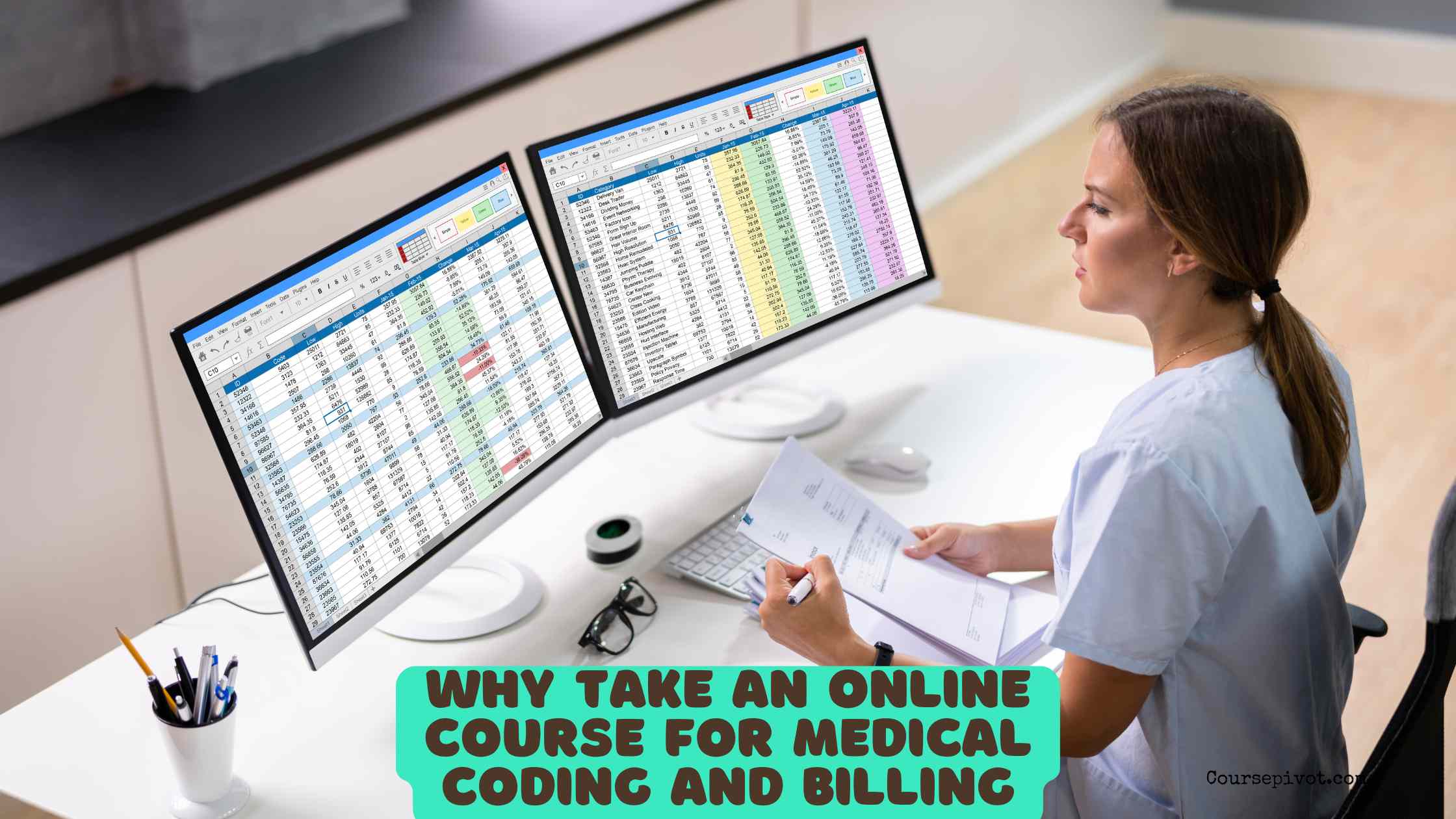
Why Take an Online Course for Medical Coding and Billing—and Where to Enroll
The healthcare industry is booming, with medical coding and billing roles projected to grow 8% by 2032, faster than average, according to the U.S. Bureau of Labor Statistics. If you’re eyeing a stable, in-demand career translating medical procedures into codes for insurance billing, an online course is a smart entry point. But why go online, and where do you start? This blog breaks down the top reasons to take an online course for medical coding and billing and recommends the best programs, based on accreditation, flexibility, and outcomes.
Table of Contents
Why Choose Online Learning for Medical Coding and Billing?
Online courses offer a practical path to certification and skills like ICD-10-CM/CPT coding, HIPAA compliance, and claim processing. Here’s why they’re ideal:
1. Flexibility to Fit Your Schedule
Balancing work, family, or school? Online programs let you study anytime, anywhere—perfect for busy adults. For instance, self-paced options from providers like U.S. Career Institute allow completion in 4–12 months, with modules on anatomy, coding guidelines, and reimbursement. This flexibility suits 70% of students who work full-time, per a 2023 survey by the American Health Information Management Association (AHIMA).
2. Cost-Effective and Accessible
Traditional programs can cost $10,000+, but online certificates range from $500–$3,000, often with payment plans or financial aid. Siena Heights University’s 28-week dual-certification program, for example, prepares you for AAPC’s CPC exam at under $2,000. Plus, no commuting saves time and money—ideal for remote learners in rural areas.
3. Prepares You for Industry Certifications
Reputable online courses align with exams like Certified Professional Coder (CPC) from AAPC or Certified Coding Associate (CCA) from AHIMA, boosting employability by 15–20%, per AAPC’s 2023 Salary Survey. Programs like Penn Foster’s diploma include exam prep, with 80% of graduates passing on the first try.
4. Hands-On Skills with Real-World Focus
Courses emphasize practical tools like coding software and claim forms, often with virtual simulations. Ultimate Medical Academy (UMA)’s program, for example, covers HIPAA and third-party billing through interactive modules, preparing you for roles earning $45,000 median salary.
5. High Job Demand and Career Growth
Healthcare needs coders for electronic records and insurance—jobs grew 9% last year. Online training gets you certified fast, opening doors to remote work (50% of roles) and advancement to auditing or compliance.
Where to Enroll: Top Online Programs
Look for accredited programs (e.g., by CAHIIM or ABHES) that prepare for CPC/CBCS exams. Here are five standout options:
| Program | Duration & Cost | Key Features | Best For |
|---|---|---|---|
| Penn Foster Medical Billing & Coding Diploma | 6–12 months; $799–$999 | Self-paced, CPC/CBCS prep, career services | Beginners seeking flexibility |
| U.S. Career Institute Online Medical Coding & Billing | 4–12 months; $1,289 | CBCS/CPC-A voucher, 100% online, job placement help | Budget-conscious learners |
| AHIMA Medical Coding & Reimbursement Certificate | 6–12 months; $1,500–$2,500 | CCA/CCS prep, transferable credits, expert instructors | Certification-focused pros |
| Siena Heights University Online Dual-Certification | 28 weeks; $1,995 | CPC/CCA dual prep, ethical training, open enrollment | Quick career changers |
| Ultimate Medical Academy Medical Billing & Coding Diploma | 9 months; $2,500 (with aid) | Interactive sims, AAPC exam prep, support services | Hands-on learners |
These programs boast 80–90% job placement rates within 6 months, per provider data.
Practical Tips to Get Started
- Assess Your Goals: For entry-level, choose certificate programs; for advancement, opt for associate degrees.
- Check Accreditation: Ensure CAHIIM or ABHES approval for employer recognition.
- Financial Aid: Explore FAFSA for degrees; scholarships like AAPC’s cover exams ($349–$399).
- Prep for Exams: Practice with free AAPC/ AHIMA resources; aim for CPC (outpatient) or CCS (inpatient).
- Build Experience: Volunteer at clinics or freelance on Upwork for billing tasks.
Things to Avoid
Don’t pick unaccredited programs—wasted time and money. Avoid rushing certifications without practice; pass rates drop 20% without prep. Don’t ignore costs—factor in exam fees ($300+). Steer clear of “guaranteed job” scams; legit programs offer guidance, not promises.
Tailoring to Your Needs
Working Parents: Choose self-paced like Penn Foster. Career Changers: AHIMA for credentials. Budget Shoppers: U.S. Career Institute. Adjust based on time and funds for success.
Key Takeaways
Taking an online course for medical coding and billing makes sense for its flexibility, affordability, certification prep, practical skills, and job growth—with roles paying $45,000+ and 8% expansion. Enroll in top programs like Penn Foster ($799) or AHIMA ($1,500+) for CPC/CCA readiness. Start with accredited options, apply for aid, and practice exams to land work fast. Healthcare needs coders now—why wait? What’s your first step toward certification?
Cite this article
You can copy and paste your preferred citation format below.
Martin, L. & Arquette, E.. (2025, October 3). Why Take an Online Course for Medical Coding and Billing—and Where to Enroll. Coursepivot.com. https://coursepivot.com/blog/why-take-an-online-course-for-medical-coding-and-billing-and-where-to-enroll/



